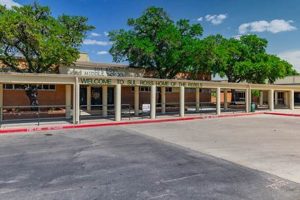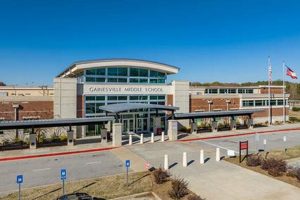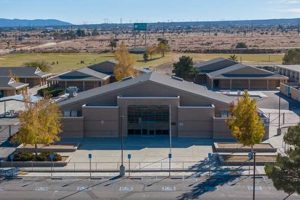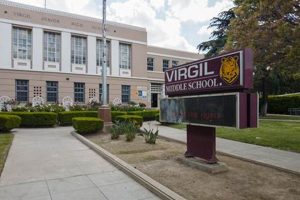Closing out the academic year with engaging experiences provides students with opportunities to celebrate accomplishments, reflect on lessons learned, and build camaraderie. Examples include field trips, class picnics, talent shows, academic competitions, and community service projects. These events offer a structured yet relaxed atmosphere for students to connect with peers and teachers outside of the traditional classroom setting.
Meaningful culminating experiences contribute positively to the overall school environment. They offer a sense of closure after a demanding academic year, fostering a positive association with learning and school community. Historically, schools have recognized the importance of marking the academic year’s end, evolving from simple award ceremonies to more elaborate celebrations reflecting the changing needs and interests of students. These activities can also help ease the transition to summer break, reducing stress and promoting well-being.
The following sections will explore various types of suitable culminating activities, categorized by their focus on academic enrichment, community building, or creative expression. Considerations for planning and implementing these events will also be addressed, including budgeting, logistics, and ensuring inclusivity for all students.
Tips for Planning Culminating School Year Experiences
Successful year-end activities require careful planning and consideration of student needs and interests. The following tips offer guidance for developing engaging and memorable experiences.
Tip 1: Establish Clear Objectives. Define the purpose of the activities. Is the focus academic reinforcement, social-emotional development, or a combination? Clear goals will guide activity selection.
Tip 2: Involve Students in Planning. Solicit student input regarding preferred activities. Surveys, suggestion boxes, or class discussions can provide valuable insights, fostering student ownership and engagement.
Tip 3: Consider Budgetary Constraints. Develop a realistic budget that outlines anticipated expenses. Explore cost-effective options such as leveraging school resources, seeking community partnerships, or organizing fundraising initiatives.
Tip 4: Prioritize Inclusivity. Ensure all students can participate, regardless of physical abilities, learning differences, or cultural backgrounds. Offer a diverse range of activities to cater to varied interests and needs.
Tip 5: Secure Necessary Permissions and Logistics. Obtain required approvals for off-campus trips, guest speakers, or special events. Arrange transportation, secure necessary equipment, and confirm venue availability well in advance.
Tip 6: Promote the Events Effectively. Communicate details about scheduled activities through school announcements, newsletters, and social media platforms. Generate enthusiasm and encourage participation.
Tip 7: Incorporate Reflection and Recognition. Encourage students to reflect on their learning journey and celebrate accomplishments. Incorporate award ceremonies, student showcases, or portfolio presentations.
Careful planning contributes significantly to the success of culminating activities. By considering these tips, schools can create enriching experiences that leave a lasting positive impression on students.
By thoughtfully implementing these strategies, educators can create a memorable and meaningful end to the school year, setting a positive tone for the summer break and the year ahead.
1. Celebration
Celebratory activities are integral to end-of-year events for middle school students. They provide opportunities to acknowledge accomplishments, foster a sense of community, and mark the transition to summer break. These celebrations can take various forms, each contributing uniquely to the overall experience.
- Academic Achievement Recognition
Acknowledging academic successes reinforces positive learning behaviors and motivates students. Award ceremonies, honor roll announcements, or subject-specific recognition events highlight individual and collective achievements, fostering a sense of pride and accomplishment. These can range from formal assemblies to informal classroom celebrations.
- Social and Emotional Growth
Celebrating social-emotional development recognizes students’ growth in areas such as teamwork, leadership, and conflict resolution. Activities like peer recognition programs or class-designed projects celebrating collaborative efforts reinforce the importance of these skills. Public acknowledgment strengthens these positive behaviors within the school community.
- Community Building Events
Events fostering a sense of community allow students and staff to connect outside the traditional classroom environment. Field days, class picnics, or talent shows provide informal interaction opportunities, strengthening relationships and building positive memories associated with the school year.
- Creative Expression Showcases
Showcasing student creativity through art exhibitions, musical performances, or theatrical productions celebrates diverse talents and provides a platform for self-expression. These events allow students to share their work with the school community, fostering a sense of pride and accomplishment.
These varied celebratory elements combine to create a positive and memorable end-of-year experience. Through recognition of academic, social, and creative achievements, culminating events contribute to a sense of closure and prepare students for a successful transition to the next stage of their educational journey.
2. Reflection
Reflection plays a crucial role in end-of-year activities for middle school students. It provides opportunities to consolidate learning, identify areas for growth, and promote self-awareness. Incorporating reflective practices into culminating events encourages deeper engagement with the academic year’s experiences and fosters a sense of closure.
- Academic Progress Review
Reviewing academic progress helps students understand their strengths and weaknesses in specific subjects. This can involve examining graded assignments, completing self-assessments, or participating in teacher-student conferences. Understanding progress promotes goal setting for future academic endeavors.
- Skill Development Analysis
Analyzing skill development beyond academics, such as communication, collaboration, and problem-solving, provides a holistic view of student growth. Participating in group projects, presentations, or peer feedback sessions offers opportunities to identify areas for improvement in these crucial areas.
- Goal Setting for the Future
End-of-year reflection provides an opportune time for students to set goals for the following academic year. This can involve identifying specific academic targets, developing strategies to improve specific skills, or exploring extracurricular interests. Goal setting fosters motivation and provides a sense of direction for future learning.
- Personal Growth Recognition
Reflecting on personal growth encourages students to acknowledge their development beyond academic achievements. Journaling, creative writing prompts, or guided discussions can facilitate reflection on social-emotional learning, resilience, and character development. Recognizing personal growth fosters self-awareness and builds confidence.
By incorporating these reflective practices, end-of-year activities become more than just celebrations; they transform into valuable opportunities for growth and self-discovery, setting the stage for continued academic and personal success in the future.
3. Community Building
Community building activities during the final weeks of the school year offer valuable opportunities to strengthen bonds among students, teachers, and staff. This period, often marked by decreased academic pressure, provides an ideal time to foster connections and create lasting positive memories associated with the school environment. Stronger school communities benefit from increased student engagement, improved communication, and a greater sense of belonging, which can positively impact academic performance and overall well-being. For example, a school-wide field day with mixed-grade teams fosters interaction and encourages collaboration across different age groups, building a sense of collective identity. Similarly, class projects involving community service, such as park cleanups or fundraising for local charities, connect students with the wider community beyond the school walls, instilling a sense of civic responsibility.
These activities offer a chance to celebrate collective accomplishments and acknowledge individual contributions throughout the year. Events like award ceremonies recognizing academic achievement, sportsmanship, or artistic talent showcase student strengths and inspire others. Incorporating student-led initiatives, such as organizing a talent show or designing a mural for a common area, empowers students and fosters ownership within the school community. Such experiences contribute to a positive school climate, where students feel valued and respected, and staff members feel appreciated for their dedication. These positive associations with the school environment can have long-term benefits, encouraging continued engagement and participation in school activities.
Cultivating a strong sense of community requires thoughtful planning and execution. Activities should be inclusive and accessible to all students, considering diverse interests and abilities. Clear communication about event details and opportunities for participation is essential for maximizing engagement. By prioritizing community building during end-of-year activities, schools can foster a supportive and inclusive environment that benefits students, staff, and the wider community. This investment in building positive relationships contributes to a sense of belonging and shared purpose, leaving a lasting impact beyond the academic year.
4. Stress Reduction
The end of the academic year, while a time of celebration, can also be a source of stress for middle school students. Final exams, impending transitions to new grades or schools, and the disruption of established routines can contribute to anxiety. Well-planned end-of-year activities offer opportunities to alleviate this stress and promote emotional well-being, facilitating a smoother transition into the summer break.
- Structured Downtime
Incorporating structured downtime into end-of-year activities allows students to relax and decompress in a supportive environment. Activities such as designated quiet reading periods, board game sessions, or outdoor recreational time provide a break from academic pressures and promote relaxation. These structured activities provide a sense of normalcy and routine during a potentially chaotic period.
- Creative Expression Outlets
Providing outlets for creative expression can be a powerful stress reliever. Engaging in activities like art projects, music performances, or creative writing allows students to process emotions, express themselves non-verbally, and experience a sense of accomplishment. These activities can serve as a healthy distraction from academic concerns and promote emotional processing.
- Social Connection Opportunities
End-of-year activities that emphasize social connection can help mitigate stress by fostering a sense of belonging and support. Class picnics, field trips, or collaborative projects provide opportunities for students to interact with peers and teachers in relaxed settings, strengthening relationships and building a sense of community. Social interaction can be a powerful buffer against stress and promote emotional resilience.
- Mindfulness and Relaxation Exercises
Introducing mindfulness and relaxation techniques can equip students with coping mechanisms for managing stress both during the end of the school year and beyond. Guided meditation sessions, deep breathing exercises, or yoga can help students regulate emotions, reduce anxiety, and improve focus. These practices can empower students to manage stress independently and promote long-term well-being.
By incorporating stress-reduction strategies into end-of-year activities, schools can create a supportive and positive environment that helps students navigate the challenges of this transitional period. These activities not only alleviate immediate stress but also equip students with valuable coping mechanisms for managing future stressful situations, contributing to their overall emotional health and well-being.
5. Skill Development
End-of-year activities in middle school provide opportune moments for skill development beyond traditional academic learning. These activities can focus on crucial areas such as leadership, teamwork, communication, problem-solving, and creative thinking. For instance, organizing a student-led fundraising event necessitates teamwork, communication, and problem-solving skills. Students must collaborate on tasks, communicate effectively within the group and with external stakeholders, and navigate logistical challenges. Similarly, participating in a debate club or mock trial hones critical thinking, public speaking, and argumentation skills. Project-based learning activities, such as designing and building a miniature model bridge, promote hands-on application of scientific principles and engineering design thinking, fostering problem-solving and creativity. These experiences provide valuable opportunities for students to apply knowledge learned in the classroom to real-world scenarios, solidifying understanding and building confidence.
The less structured nature of end-of-year activities can also facilitate the development of social-emotional skills. Collaborative art projects, theatrical productions, or musical performances encourage teamwork, empathy, and emotional expression. Participating in outdoor adventure activities, such as camping or hiking trips, fosters resilience, adaptability, and self-reliance. Furthermore, community service projects, like volunteering at a local animal shelter or organizing a food drive, cultivate empathy, civic responsibility, and a sense of purpose. These diverse experiences contribute to well-rounded development, equipping students with essential skills for future academic and personal success.
Integrating intentional skill development into end-of-year activities maximizes their educational value. Educators can design activities with specific skill-building objectives in mind, providing opportunities for students to practice and refine these skills in engaging and supportive environments. Assessment of skill development, through observation, self-reflection, or peer feedback, provides valuable insights into individual growth and informs future instructional planning. By recognizing and fostering skill development, end-of-year activities become powerful tools for preparing students for the challenges and opportunities that lie ahead.
6. Transition Facilitation
End-of-year activities in middle school play a crucial role in facilitating smooth transitions for students. These transitions encompass various shifts, including moving to a new grade level, changing schools, or preparing for the summer break. Well-designed activities can ease anxiety, build excitement, and equip students with the skills and support necessary to navigate these changes successfully.
- Bridging the Gap to the Next Grade
Activities designed to bridge the gap between grade levels can alleviate apprehension about increased academic demands and new social dynamics. Previewing upcoming curriculum topics through interactive workshops or inviting current high school students to share their experiences can demystify the transition and build anticipation. Orientation programs for incoming students, including tours of the new school building and introductions to key staff members, foster familiarity and reduce anxiety.
- Preparing for New School Environments
For students transitioning to a new school entirely, end-of-year activities can provide essential preparation. Connecting with future classmates through online forums or pen-pal programs establishes initial connections and builds a sense of community before the school year begins. Sharing information about extracurricular activities and school culture through presentations or virtual tours can help students acclimate to the new environment and identify potential areas of interest.
- Promoting a Positive Summer Break
End-of-year activities contribute to a positive summer experience by providing students with resources and opportunities for continued learning and engagement. Summer reading programs, online learning platforms, or connections to community resources, such as libraries and museums, encourage continued intellectual stimulation during the break. Information sessions about summer camps, volunteer opportunities, or part-time jobs can help students structure their time productively and explore new interests.
- Building Resilience and Adaptability
End-of-year activities can foster resilience and adaptability by providing opportunities for students to practice coping mechanisms for managing change. Workshops on stress management techniques, such as mindfulness or deep breathing exercises, equip students with tools for navigating transitions effectively. Group discussions about common challenges associated with change, facilitated by school counselors or mentors, provide a supportive space for students to share concerns and develop coping strategies.
By addressing these various facets of transition, end-of-year activities contribute significantly to student well-being and academic success. These thoughtfully designed experiences not only ease immediate anxieties but also equip students with the skills and resilience necessary to navigate future transitions throughout their educational journey and beyond.
Frequently Asked Questions
This section addresses common inquiries regarding end-of-year activities suitable for middle school students.
Question 1: How can end-of-year activities support academic growth even though the school year is ending?
Culminating activities can reinforce learned concepts through project-based learning, presentations, or reflective exercises. They offer opportunities to apply knowledge in practical settings and identify areas for future development.
Question 2: What are some budget-friendly activity ideas?
Cost-effective options include utilizing existing school resources, organizing student talent shows, hosting classroom-based celebrations, or partnering with local community organizations for collaborative projects.
Question 3: How can these activities address diverse student interests and needs?
Offering a variety of activities catering to different learning styles and interests ensures inclusivity. Options can range from academic competitions to artistic showcases, outdoor adventures, and community service projects.
Question 4: How can parental involvement be encouraged in end-of-year activities?
Schools can invite parents to volunteer for event organization, chaperone field trips, or contribute to classroom celebrations. Communicating clearly about opportunities for involvement increases participation.
Question 5: How can these activities prepare students for the transition to the next grade or a new school?
Orientation programs, peer mentoring initiatives, and opportunities to connect with future classmates can ease the transition process. Activities focusing on social-emotional learning can build resilience and adaptability.
Question 6: What role do teachers play in ensuring the success of end-of-year activities?
Teachers contribute by planning engaging activities aligned with learning objectives, facilitating student participation, providing support and guidance, and fostering a positive and celebratory atmosphere.
Thoughtfully planned activities contribute significantly to a positive and meaningful end-of-year experience for middle school students. They provide opportunities to celebrate accomplishments, reflect on learning, build community, and prepare for future transitions.
For further information on specific activities and planning resources, please consult the following resources
End-of-Year Activities for Middle School
Culminating activities for middle school students offer significant benefits beyond simply marking the end of the academic year. As explored, these experiences provide crucial opportunities for celebration, reflection, community building, stress reduction, skill development, and transition facilitation. From academic recognition ceremonies to project-based learning experiences and social events, thoughtfully planned activities contribute to a positive and enriching conclusion to the school year.
Strategic implementation of end-of-year activities strengthens the school community, fosters student growth, and prepares students for future academic and personal success. Prioritizing these culminating experiences demonstrates a commitment to holistic student development and recognizes the importance of a positive and supportive learning environment. Investing time and resources in well-structured end-of-year activities yields substantial returns in student well-being, academic engagement, and overall school success.







